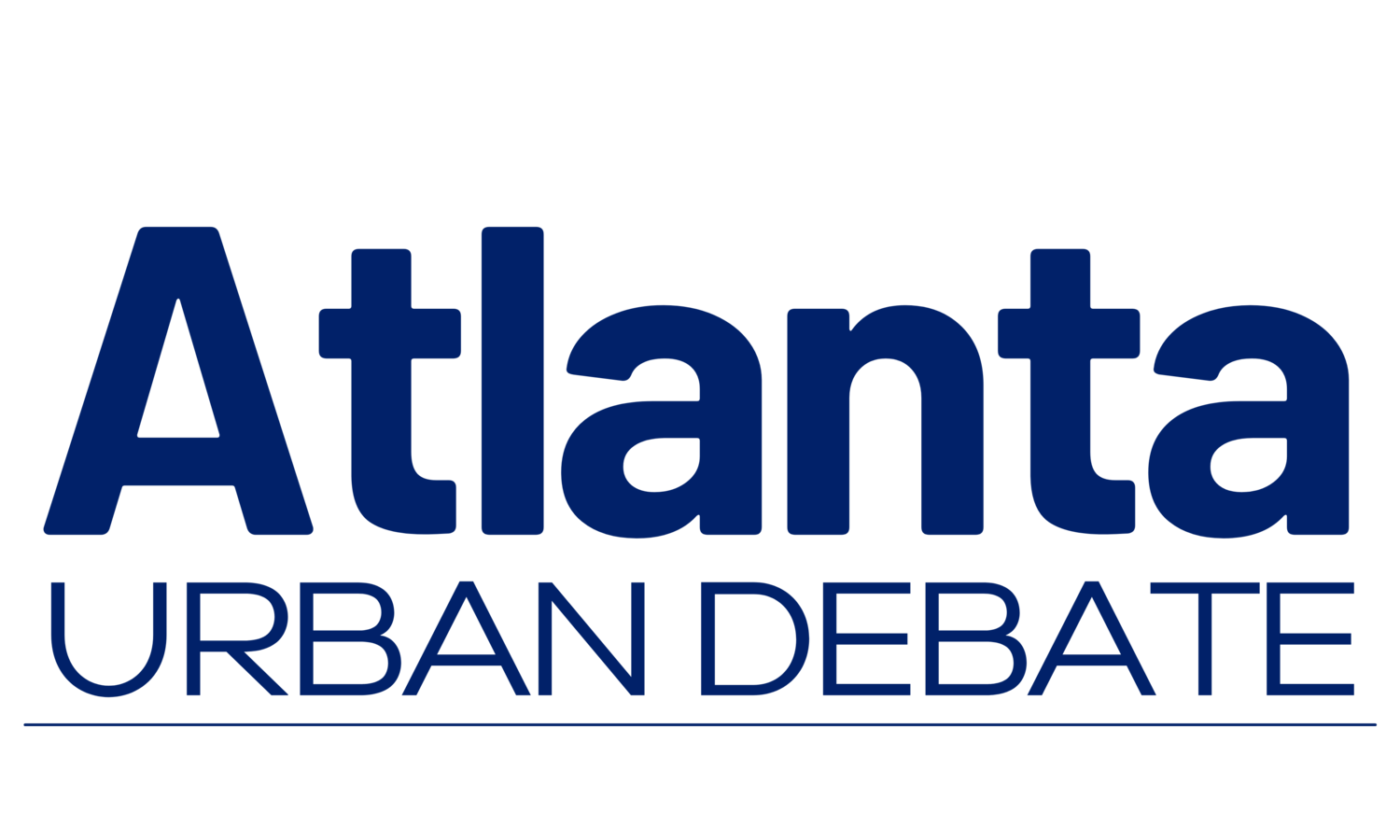The Atlanta Urban Debate League is committed to providing excellent debate education programs, services, and opportunities to diverse students, educators, and members of the community!
What’s Different? Public Forum vs Policy
Both events
Debate an assigned topic (resolution).
Have assigned sides.
One team affirms (supports) the resolution.
One team negates (opposes) the resolution.
Have a judge vote for which team did the better debating.
Use research to support arguments.
Require a FULL CITATION for all sources.
Follow an assigned speech structure.
Have the “Pro” / Affirmative speak first.
Have debaters ask and answer questions.
Policy
Policy has a year-long resolution.
Policy focuses on government policy.
The Affirmative proposes a plan.
The Negative defends either the status quo or a competitive policy.
Judges in policy debate vote “for” or “against” the plan.
They tend to be more experienced and technical.
Policy debate uses a formal evidence structure (“cards”).
“Cards” are extended block quotes with a formal citation.
Most speeches heavily rely on reading, extending, or comparing “cards.”
Policy debate has longer speech times.
Both sides have two constructives and two rebuttals.
The Negative speaks back-to-back (the “Block”).
Policy Debate has cross-examination.
After a constructive, ONLY the opposing team asks questions.
Public Forum
Public Forum topics change.
Fall Semester topics change every 2 months.
Spring Semester topics change every month.
Public Forum focuses on current events.
The “Pro” side defends the resolution as a whole.
The “Con” side opposes the resolution.
Judges in Public Forum decide if the topic is generally a good or bad idea.
They tend to be less experienced (lay) and focus on the big picture.
Public Forum uses less formal evidence structure.
Sources may be quoted or paraphrased (like a school essay or research paper).
Students do their OWN research.
A “packet” is NOT provided.
Public Forum has shorter speech times.
Both sides have one constructive and one rebuttal.
The Summary & Final Focus speeches focus on the “big picture.”
Public Forum has crossfire (mutual cross-examination).
After each cycle of speeches, excluding the final focus cycle, BOTH teams ask and answer questions.
